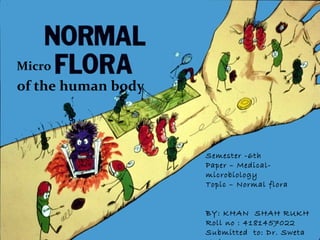The document discusses the normal flora or microbiota that colonize the human body. It describes the major sites where microbes normally reside, including the skin, respiratory tract, gastrointestinal tract, and urogenital tract. The gut microbiota plays an important role in digestion and produces vitamins. Antibiotics can disrupt the normal balance of microbes. The Human Microbiome Project aims to characterize the microbes associated with health and disease.












































